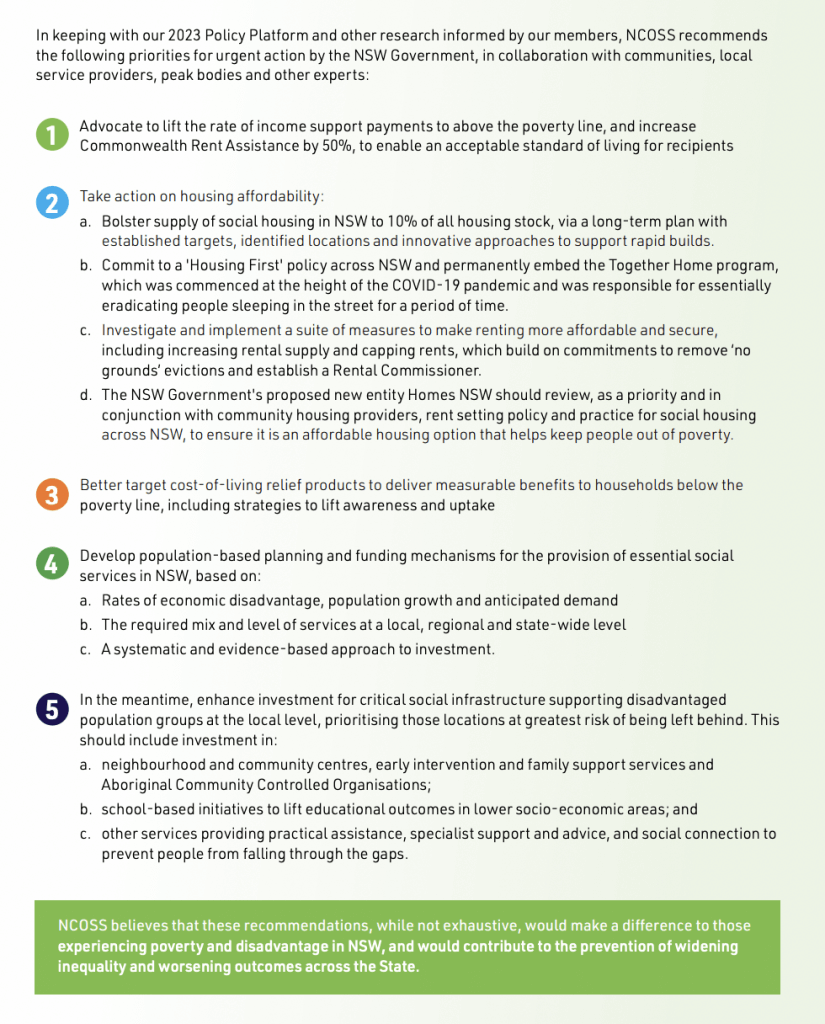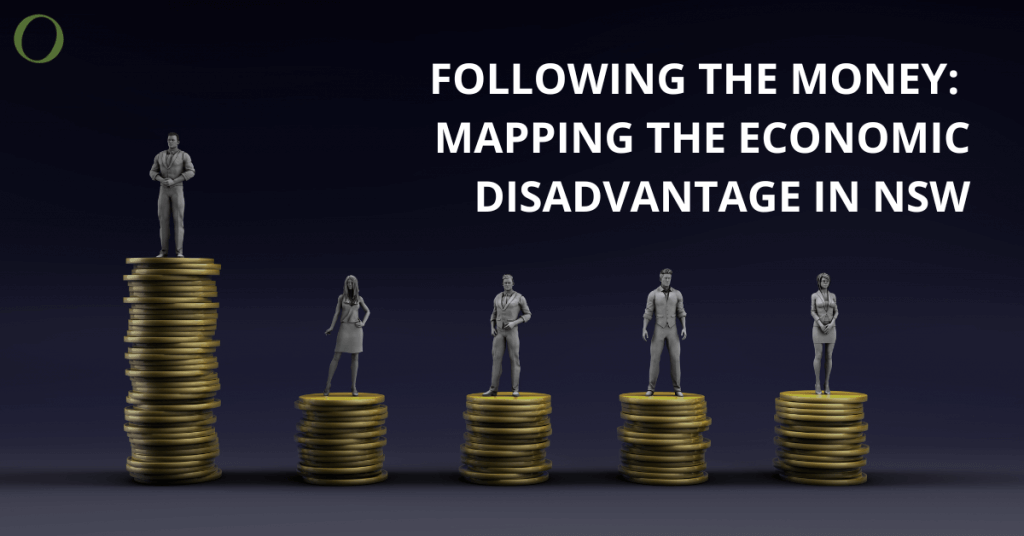The ‘Mapping Economic Disadvantage in NSW’ project was undertaken by the National Centre for Social and Economic Modelling (NATSEM) at the University of Canberra. It was commissioned by the New South Wales Council of Social Service (NCOSS).
- The maps of significant economic disadvantage in NSW serve as an important tool to identify poverty clusters and facilitate better design and targeting of services and supports to the right population groups in the right locations.
- Understanding why some people are disproportionately exposed to poverty and why it clusters in certain areas is essential for informing policy, planning, and advocacy efforts.
For further details, please refer to the links provided below
Key Themes Report: https://bit.ly/3NfI7N4
NATSEM Research Report: https://bit.ly/442lFwN
Online Mapping Tool: https://bit.ly/3N2GvpP
SA2 Dashboard: https://bit.ly/3LpkcJM
Key Economic Disadvantage Findings
- Two factors that put people at the highest risk of living in poverty are unemployment (26.1%), or being of employment age (aged 15 to 64 years) but not in the labour force (32.5%). However, more than 1/4 of people living in poverty have a job and are the ‘working poor.’
- Those living in homes with a mortgage in rural and regional NSW, private renters and public housing tenants in Greater Sydney experienced an increase in poverty rates since 2016.
- Private rental market has the largest number of people experiencing poverty of all housing tenures – at over 275,000.
- Between 2016 and 2021, almost 50,000 more people over the age of 65 fell into poverty.
Sydney:
- Economic disadvantage deepened in some suburbs in the five years since the 2016 census.
- Smithfield – Wetherill Park and Colyton – Oxley Park experienced a 33% increase in economic disadvantage.
- Regents Park saw poverty rise by 53%.
- On the other hand, more affluent areas such as Mosman, Bondi Junction, Waverley, and Coogee, Clovelly have seen a decrease in economic disadvantage. These areas have experienced a reduction in economic disadvantage by between 22% and 44%.
Regional NSW:
- Poverty rates vary significantly by demographic groups and areas, with higher poverty concentration in some parts of regional NSW.
- The poverty rate for young people (15-24 years) is 25% higher in rural and regional NSW compared to Greater Sydney.
Children:
- The rate of children under 15 in poverty across NSW decreased by 2.5 percentage points. Despite this, children still have the highest rate of poverty, state-wide, of any age bracket at 15.2%. They make up one-quarter of all those living in poverty in NSW.
Minority Communities:
- Aboriginal and Torres Strait Islander people are twice as likely to live in a low-income household compared to a non-Indigenous persons
- Culturally and Linguistically diverse communities are more than twice as likely to live in a low-income household.
- People with a disability are almost three times as likely to live in a low-income household
COVID-19:
- COVID-19 and associated lockdowns impacted household finances.
- Available data shows a rapid rise in poverty in March 2020, followed by a sharp fall when new temporary measures (e.g. JobKeeper) came in.
- Evidence suggests that COVID-19’s long-term impacts will disproportionately affect groups already experiencing high levels of disadvantage
Recommendations Provided:








